This is a tale of my experiences with a Leica M10-D, but my journey with a digital M without a screen didn’t start with this camera. I used a Leica M-D for a while in addition to an analog M for portrait shoots in order to test whether I like the concept of a digital camera without a screen.
To be honest, most of the time I used the analog camera and not the M-D. When I wanted to check the pose of the model or the light situation, I took a quick snapshot with my cell phone, checked it and took the photos on film. When I had the choice I preferred the analog camera. During a shoot, I used the M-D for the first shots until the ice with the model was broken and then I switched to the analog M.
During travels I used the M-D as my only camera and it worked without any problems. Perfect photos, authentic colors, exposition without any problems and (this is also what I really enjoyed) an unique feel of the surface.
But I noticed that taking portraits from strangers had always a small disadvantage: the people could not see the photo and in some cases they were a bit disappointed. Ok, this is the concept of the camera, but marketing with purism and Leica feeling is the one side and problems in real life are the other side. Although I liked it a lot, I sold it.
In October 2018, the successor of the M-D was presented, the Leica M10-D. The concept was the same, a digital camera without a screen, but it was full of new gadgets and it had the sensor of the M10.
The Leica M10-D looks like a M10-P with two rotating dials on the back for exposure compensation and a wind-on-lever which looks so damned cool.
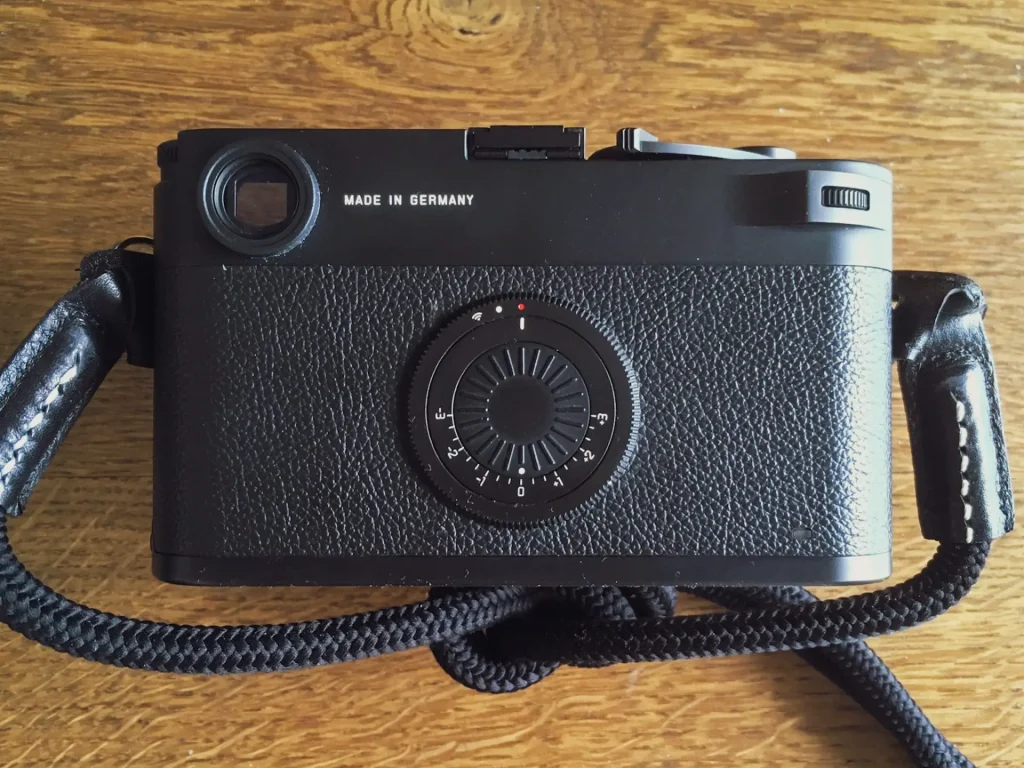
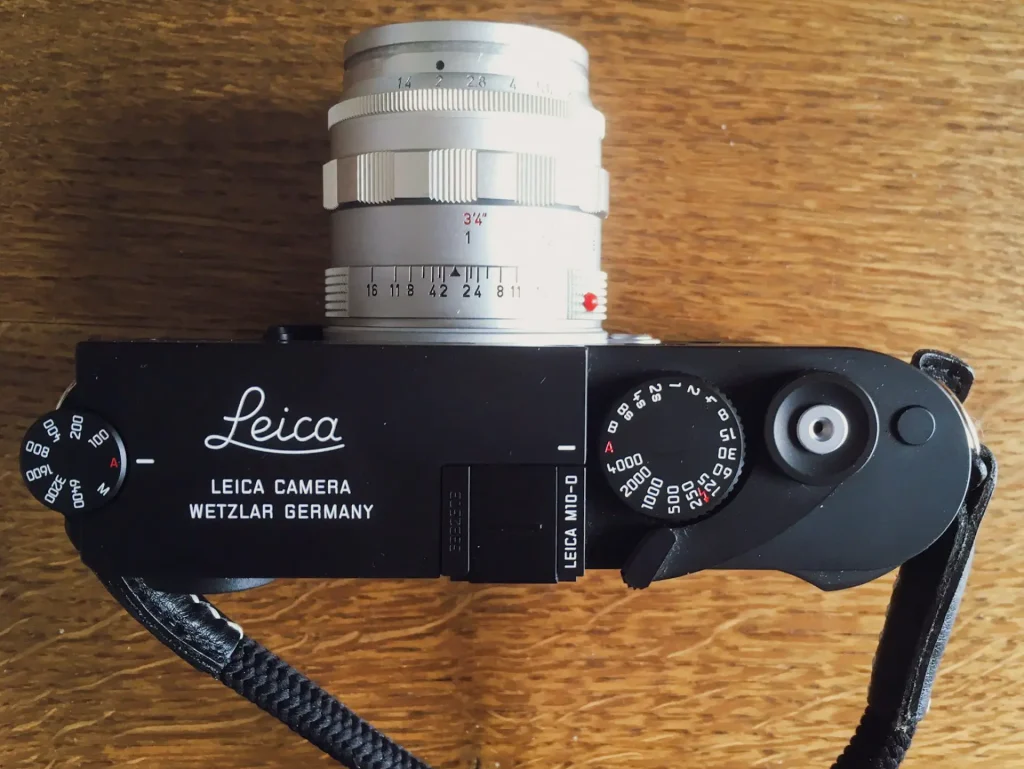
But unfortunately it is a “fake“ wind-on-lever“ without a special function, it is a more or less a thumb grip to hold or stabilize the M10-D. This wind-on-lever really polarized the Leica community, some hate it and find it ridiculous and the other love it just because of the design. I have to admit that I am in group number 2, but this is for sure just a question of personal taste. A conventional thump grip is always blocking the hot shoe, but not the wind-on-lever. And you save money, because you have the built in grip. An argument which could not persuade my wife that the M10-D is really a money saver.
But the Leica M10-D was not only a M-D in a new design, the interior is completely different. As mentioned above it has the 24 megapixel CMOS from the M10 but you also have the possibility to use a WiFi connection via a Leica App with your iPad or cell phone. This has a lot of advantages: with the help of the App you can change many camera settings: ISO, max. ISO, white balance, JPG, JPG/RAW, metering, drive mode, formating your SD card to name just a few and you can review your photos. You also can save the photos or send them to another phone. Furthermore it is possible to shoot the camera with your cell phone as a remote control.
To some people it was against the concept of a “digital heart and analog soul“ for the others it combined the best out of two worlds. From the beginning I liked this concept which seemed very pragmatic and suitable for everyday use.
The price of the Leica M10-D is very high and I had to wait a long time until I found a second hand M10-D in a perfect condition to a “reasonable“ price. It seems that Leica do not sell the M10-D anymore. It is not available in the Leica online stores.
Leica M10-D and portrait photography
If you are used to Leica M cameras the handling is very easy: you can set shutter speed, ISO, exposure compensation and the aperture. That’s it, you can start, look through the bright and clear viewfinder, enjoy the view, focus, shoot.
The idea of the pure essence of photography, the slowing down, the concentration to the subject, no digital distraction (whatever the Leica marketing department wanted to say) sounds very obvious at first glance but in reality sometimes these romantic imaginations have to be “jettisoned“: if you need the photos not only for you but also e.g. for an agency, the model or a client, it relaxes a lot if you can check from time to time your results. If you try new things, different postures, different light situations, different clothes… nobody will only rely on his gut feeling. Who wants to sit at home in front of the computer and looking at bad results which you can not change anymore? Nobody will be happy with a bad outcome. Let’s be honest, no matter how experienced you are, we do not work (or photograph) faultlessly.
Yes, you could stick your SD-card into your iPad or computer to check the results but it is time consuming and prevents you from shooting. And for sure you can say that it is just the wrong camera for this purpose and maybe you are right, but the brain does not always prevail over the heart.
Furthermore it is possible to use an external electronic viewfinder with the M10-D to help focusing: if you turn the focus ring, it will zoom in and help you to improve your focus. This can help with “high performer“ lenses like the 0.95 Noctilux and reduce your chance of blurred photos. You can see your photo in the EFV but you can not change the settings. Sounds not bad but I do not like the size of the EVF, it destroys the pragmatic and beautiful design of the camera. I do not have one.
But with the use of the Leica App and WiFi all of a sudden you have a modern camera in your hands which makes live very easy: you connect the camera with the App and you can start shooting. After you took your photo, you can immediately see the photo on your iPad or cell phone. It is like a cordless tethered shooting. After checking the first photos, I disconnect WiFi and continue the shooting with the Leica M10-D and analog.
When I change the settings in the studio, I always repeat this procedure. With this process, it is a joy to use the M10-D. Theoretically one could use the WiFi connection for the whole shoot, but I would not like it and using the WiFi is like putting the pedal to the metal in a sports car on the German Autobahn: you can see how your battery is losing power from minute to minute. It is very energy consuming. So it is mandatory to use at least two batteries for a longer shoot.
The image from the Leica M10-D quality is equal to the other M10 cameras and in comparison to the M240 series, it is possible to use an ISO of 6400 or higher without any problems. The shutter is very quiet and almost noiseless. Post production on the PC is very easy and does not need a lot of time. Please have a look at the results of the shooting with Giulia Li. The color photos are out of the cam, nothing has to be changed, no filter, no presets. The photos were taken with three lenses (1.4/35 Summilux pre asph and a 2/50 and 2/90 Apo Summicron)
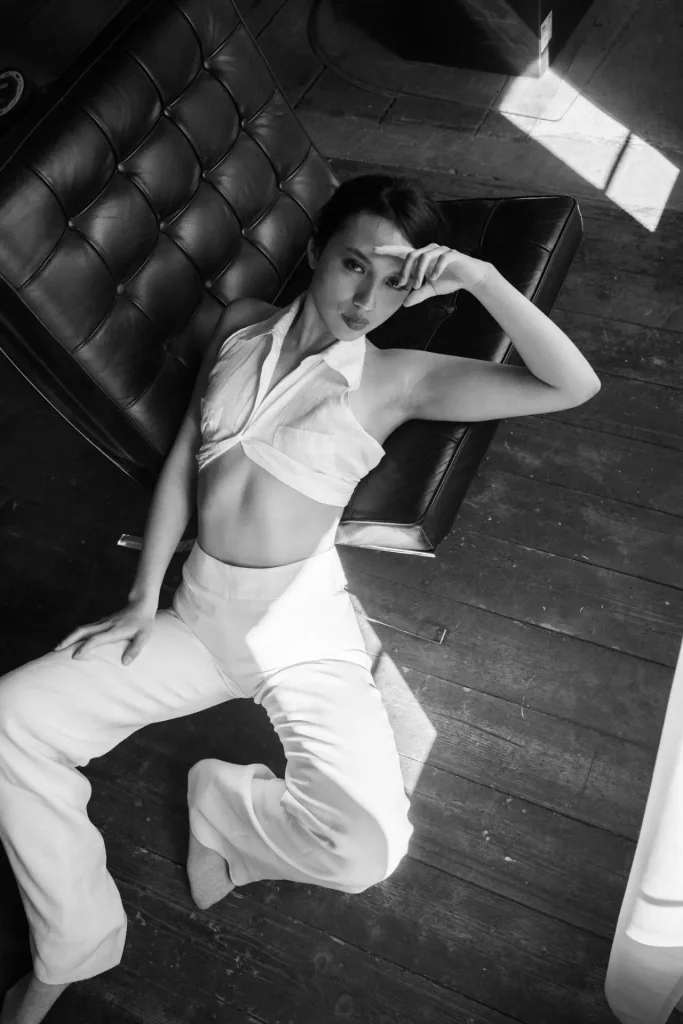
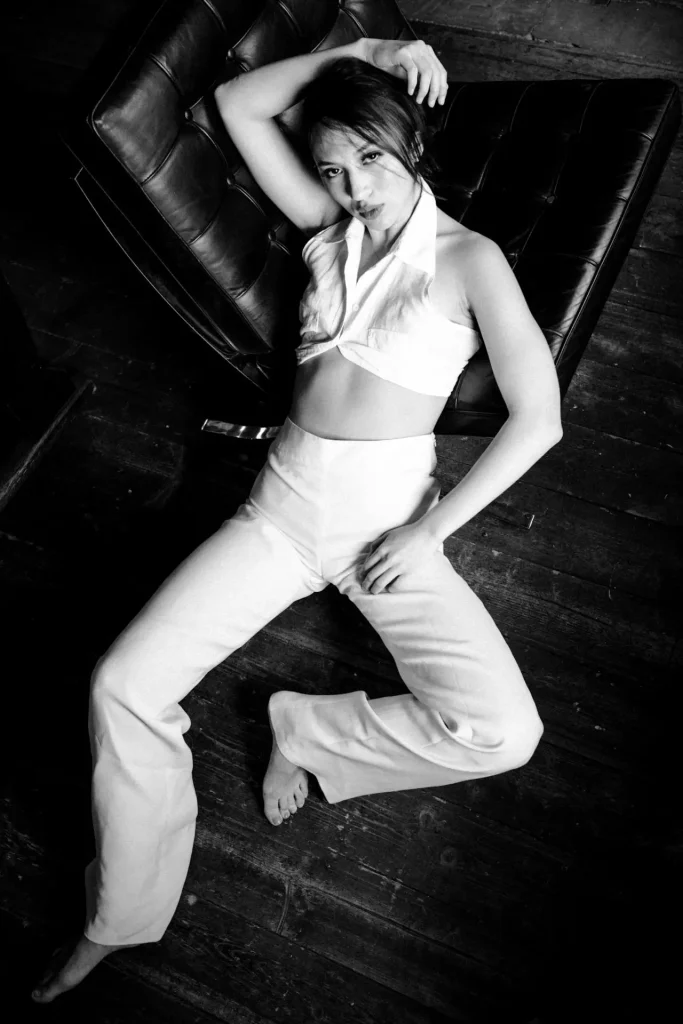
Why do I show two photos from a more or less same setting? Just to demonstrate how helpful it is to use the App at the beginning. Do you see the difference? I am always attracted by eyes and the face and sometimes I am so concentrated that I overlook very important details. I hope you like both versions but have a look at her feet: version 1 is with socks, version 2 is without.
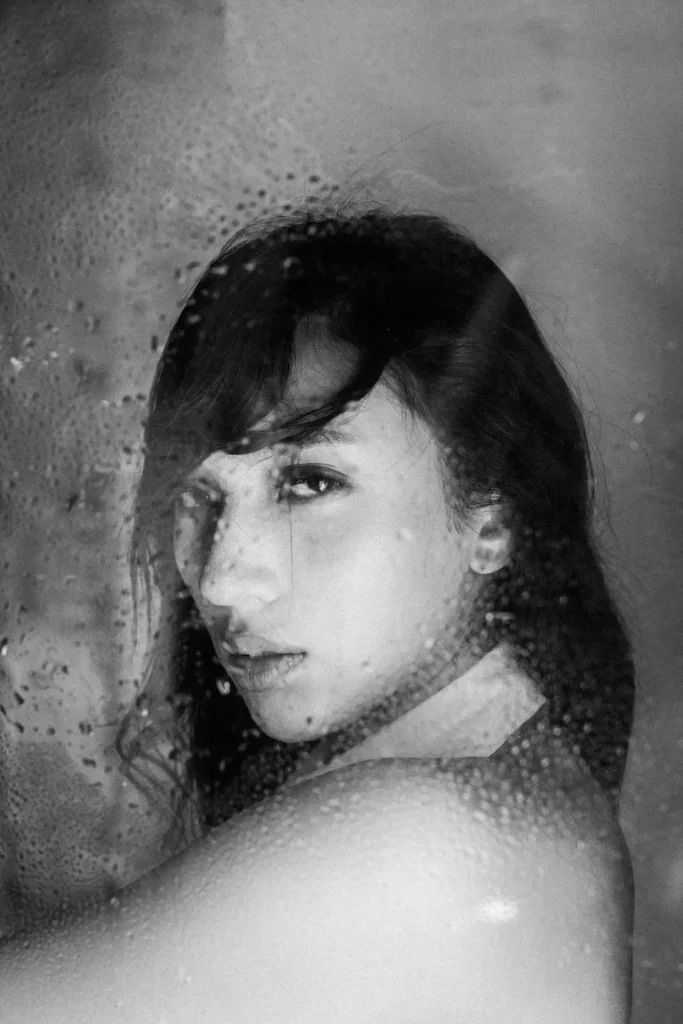
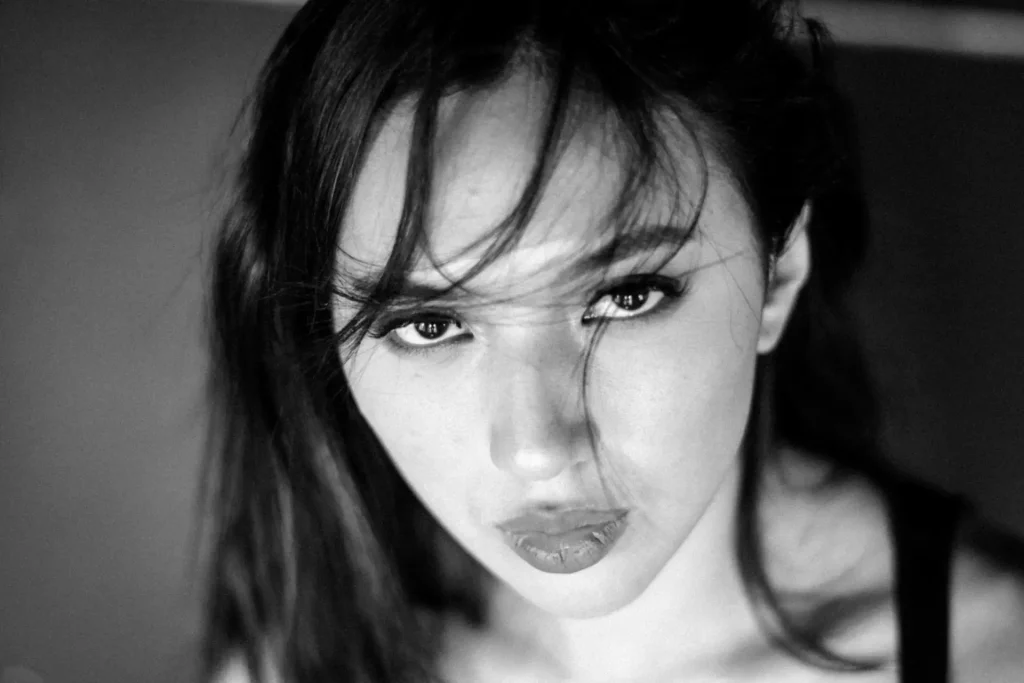



Also during travels, the WiFi connection should be a very helpful tool to send the photos direct to the cell phone of the person you have photographed. I say “should“ because Covid-19 prevented me to test it under real conditions.
Conclusion
Is it really a camera with a digital heart and an analog soul? Yes! No! It depends! I don’t know!
The answer depends on how you use the camera and this makes the Leica M10-D very interesting. You can use it like a real analog camera, you do not need a screen, you see your subject, take the picture, done. To me this is the perfect way to use the M10-D for street photography. You are looking for the perfect moment, there is no need to control it on the screen, the moment is gone after you took the photo.
But if you have situations where you are forced to get good results you can use it like a modern digital camera.
To come to an end, is the Leica M10-D a cheater; is it a betrayal of the analog philosophy? No, I do not think so. To me it is one of the most pragmatic cameras, it is how you use it.
If you wanna see more of my portrait photography please have a look at instagram.com/wick_marc/
Share this post:









Comments
Alan Jones on Leica M10-D – The Essence of Photography, or is Cheating Allowed? – By Marc Wick
Comment posted: 09/06/2021
(I love the dial on my M7, albeit I don't really need exposure comp, given the M7 has shutter button activated AEL)
Comment posted: 09/06/2021
tmc on Leica M10-D – The Essence of Photography, or is Cheating Allowed? – By Marc Wick
Comment posted: 01/03/2022
https://www.l-camera-forum.com/topic/295873-m10-d-owners-are-you-happy/page/9/#comment-3962500
Marco on Leica M10-D – The Essence of Photography, or is Cheating Allowed? – By Marc Wick
Comment posted: 14/04/2022
Comment posted: 14/04/2022
Comment posted: 14/04/2022
Comment posted: 14/04/2022
Adam on Leica M10-D – The Essence of Photography, or is Cheating Allowed? – By Marc Wick
Comment posted: 05/12/2022
Do you prefer the Leica M-A or this M10-D? Is the 24MP a limiting factor (or is 60mp an overkill)?
Thanks!
Comment posted: 05/12/2022
Irakli Gozalishvili on Leica M10-D – The Essence of Photography, or is Cheating Allowed? – By Marc Wick
Comment posted: 28/11/2023
Thank you for writing this article. I've been trying to find out if M10-D can be geotagged through a Leica Fotos app or whether that feature is exclusive to M11.
Thanks
Comment posted: 28/11/2023
Eric on Leica M10-D – The Essence of Photography, or is Cheating Allowed? – By Marc Wick
Comment posted: 28/11/2023